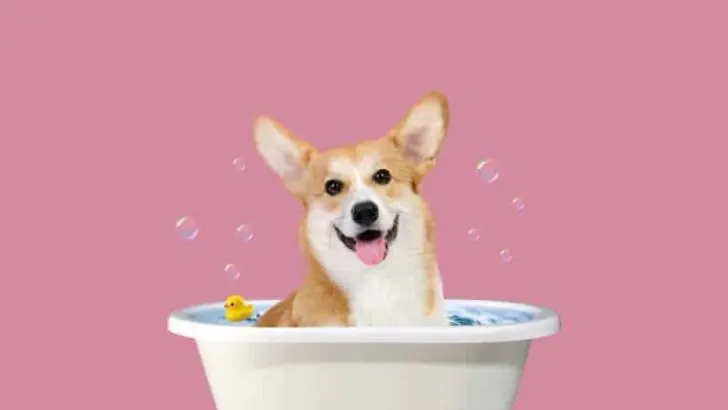Just because you’re offering your corgis the best food possible doesn’t mean that they’ll remain perfectly healthy throughout their entire lives. The overall hygiene of your corgis is as important as feeding them properly. Neglecting their hygiene can lead them to become extremely ill.
As I’ve browsed the internet, I’ve found out that there isn’t a single site with an in-depth analysis of how to groom your corgis properly. Most people don’t have enough knowledge on this subject, so I’ve decided to write down an Ultimate Guide for Corgi Grooming.
If you own a corgi, you don’t want to miss this one, as here you can find all of the necessary stuff about how to groom a corgi properly!
If wild dogs don’t get groomed, is there a reason to even groom your corgis? What are the most important parts of corgis that need to be groomed? Is it necessary to groom corgis’ teeth? Do corgis have a double coat, and if so, how can you efficiently groom it?
Corgis have a high chance of getting sick if you don’t properly take care of their overall hygiene. Never allow yourself to put your corgis in harm’s way just because you don’t know how to take care of them. Stick around and learn how to groom every part of the corgis’ body!
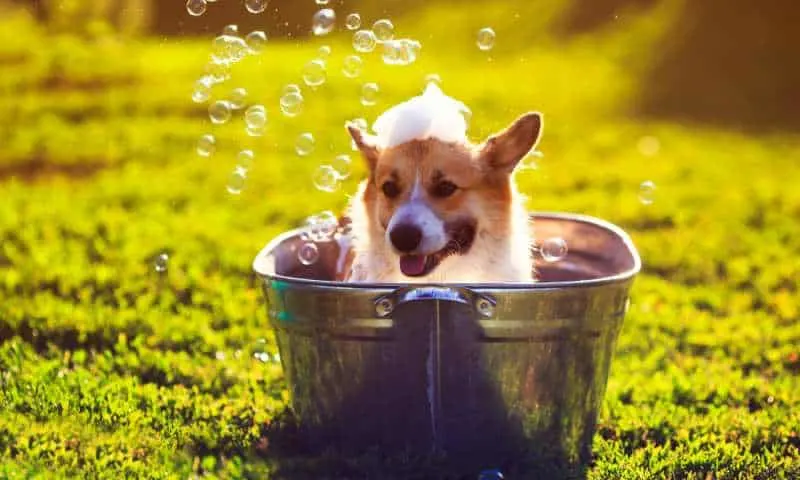
Why Is Grooming Important For Corgis?
Do corgis require grooming? Regardless of what kind of dog lives in your house, all dog breeds and especially corgis, need to be groomed. A common misconception is that you don’t have to take care of your corgis’ hygiene, as people think that all animals take care of themselves.
Wild animals don’t have a choice; they can only count on themselves or others to help them out by cleaning some parts of their bodies. Dogs particularly can only use their tongues and nails to clean themselves somewhat up whenever they feel like they’re dirty.
Corgis aren’t exempt from this rule, as they don’t possess the ability to clean themselves in any shape or form without using their tongues and nails. It’s pretty sad when you think about it, but if Mother Nature gave them only that option, we can only accept it and move on.
In the early days, most people, especially those that lived in the countryside, used corgis as herding dogs. With their abilities to track down and protect all of the livestock on the land, corgis were phenomenal pastoral dogs who used their advanced skills to herd various animals.
As you all know, those farmers didn’t particularly take care of the general appearance of their corgis. They only needed the corgis’ ability to successfully guard all of the livestock that was in possession of the farmers.
As long as they’ve completed their task, farmers were happy. Unfortunately, it turns out that that kind of life for corgis wasn’t as good as people thought it was, as those corgis weren’t adequately cleaned after they finished their daily job.
Most corgis who lived in that era suffered from numerous diseases that manifested because of poor hygiene. The dirt accumulated in their fur and between their paws leads them to become sick rather quickly.
Although most corgis developed a strong immune system, that didn’t give them the ability to stay healthy all the time. In some instances, corgis succumbed to various diseases, and that, sometimes, shortened their lifespan drastically.
We all know that corgis will live between 12 and 15 years. As long as they’re offered all of the necessary things to keep them healthy, those numbers can be expected. On the other hand, corgis that live in poor conditions will inevitably live shorter.
When Did People Start To Groom Corgis?
The fear for their beloved furballs has led people to search more about the overall hygiene of corgis. In the past few decades, regular grooming of corgis became an endlessly expanding trend among corgi enthusiasts.
These days, it’s nearly impossible to see a corgi on a leash somewhere outside without it being groomed to perfection. Most people don’t know precisely how to groom corgis by themselves, and they tend to take them to a local dog groomer.
I believe that that isn’t necessary, and if you want to learn how you can groom your corgi by yourself, you’ll need to understand the essentials about:
- Corgis’ ears
- Corgis’ eyes
- Corgis’ teeth
- Corgis’ paws
- Corgis’ nails
- Corgis’ coat
Don’t fear; it might seem complicated, but I assure you that you will be fully capable of grooming your corgis after you’ve done with this text!
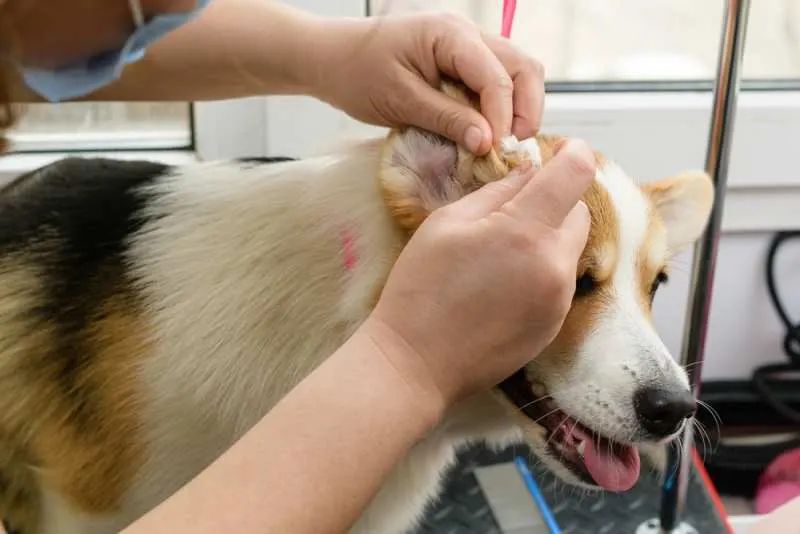
Corgis’ Ears
We often downplay the general importance of corgis’ ears, as they use it every single minute of the day. As soon as the sun starts to shine, corgis will try to locate if an intruder is within the premises of the house and backyard.
If you want to make sure that your corgi has perfect hearing, you will need to clean its ears at least once or twice a month. On the other hand, as soon as you notice that something is stuck in their ears, you will need to treat that problem immediately.
Start by calling your corgi to come to you and instruct it to sit down and stay calm until you’re finished. It might be noteworthy to mention that if you have several other dogs in your house, that you should separate them from the corgi for the time being.
Other dogs might try to distract you or your corgi, and that can lead to some complications as it’s never a good idea to mess around while you have scissors in your hand. The scissors should be the number one tool to use whenever you’re trying to groom the ears of corgis.
Any other product, such as the trimmer or shaver, might not be appealing to your corgi. It turns out that corgis don’t particularly fancy the sound that those devices produce if they’re placed close to their ears. So, just use the scissors to ensure nothing wrong happens!
As soon as your corgi has sat down, you can start to cut the hair that has grown out of the ear canal. Use the fingers to determine precisely how short you should cut the hair, as your fingers are more gentle to the touch than the cold scissors.
Collect the amount of hair by using your index and middle finger – put them close together after you’ve selected the hair that you want to cut. Hold the hair firmly but in the meantime, ensure that you aren’t hurting your corgi’ ear canal.
Try to make a quick and clean cut along the top side of your index and middle finger, where you’ve grabbed the hair. Don’t rush the cutting process, as your corgi might get scared or intimidated by the sound of the scissors.
Calm Your Corgis Down!
After every cut that you’ve made, make sure that you gently stroke your corgis, as that will put them at ease and will make them comfortable. Your corgi must trust you when you start to cut its hair in the ear canal, as any distrust might lead them to become injured.
Try to match the length of the hair to be on par with the length of their ear canal or even shorter, as any hair that juts from the ear might cause them some trouble. As long as you keep the hair in the ear canal of your corgis short, you can be sure that nothing bad will happen to their ears.
In most cases, if the hair in the ear of the corgis is left unattended for several months, it will grow out and become rather long. Dirt or other various stuff can enter easily in the ear canal of the corgis if you don’t regularly shorten their hair in the ear canal.
Don’t play games with that, and make sure that you regularly groom corgis’ ears!
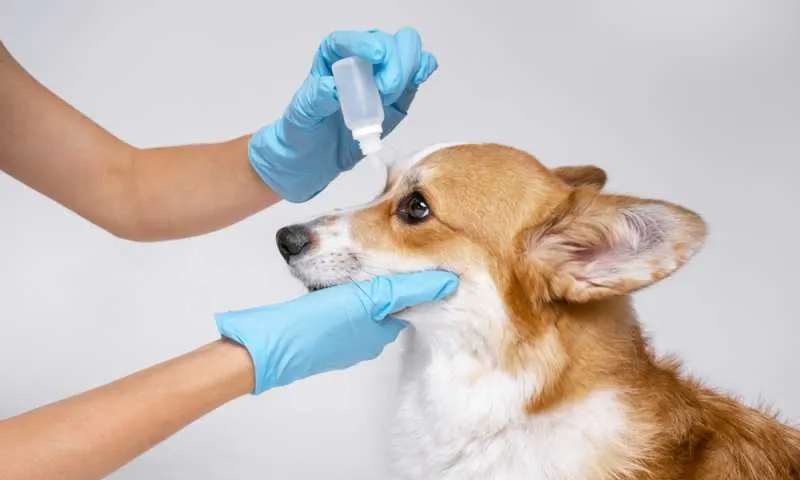
Corgis’ Eyes
How often do corgis need to be groomed when discussing their eyes? It turns out that there isn’t a set amount of times that corgis’ eyes are required to be groomed. As soon as you realize that your corgi starts to rub its eyes, that might be a clear sign that you need to treat its eyes.
It came to my surprise that most people don’t understand, at first, what grooming has to do with corgis’ eyes. Whenever your corgi starts to rub its eyes, it will do so if something has entered its eye socket or if the eye has become drier than usual.
In both cases, you must do your best to help them, as corgis can’t handle that kind of a problem successfully on their own. The same procedure that I’ve mentioned earlier will be necessary; call your corgi and order it to sit down. Don’t allow others dogs to be close to it.
Use one of your hands to grab the corgis’ neck as it might start to move around when you start to get close to its eyes. Corgis don’t particularly enjoy when others try to touch their eyes, as they’re afraid that something bad might happen to them.
You need to make sure that your corgi is as relaxed as possible, and a quick way to ensure that is by offering it some sweets. Before you even start to treat its eyes, grab some dog treats that you’ll use as a tool to keep them calm and to reward them whenever they’ve withstood something potentially stressful.
As soon as your corgi has calmed down, you can begin to inspect its eyes. As you hold its neck with one hand, use the other hand to slowly open the eye and try to look if something strange is there. Bugs and dust regularly come in corgis’ eyes, and that will irritate them.
Clean Your Hands Before You Groom Them!
If there is a bug in their eye socket, use your finger and gently remove the bug out of there. It should be noteworthy that you should always clean your hand before sticking your finger inside corgis’ eyes. Never touch their eyes if you have dirty hands!
Removing the bug is relatively easy; just be careful that you don’t have long nails. In most cases, to ensure that you don’t hurt your corgi, it’s best to call someone with shorter nails than you. If you do so, it’s necessary that your corgi knows and accepts that person.
Rather than bugs, in most cases, some hair might enter the eye socket of corgis, and that will inevitably irritate them. Use the same procedure in that case, just like you’d use when there’s a bug in their eye.
On the off chance that nothing is inside corgis’ eyes, but they still behave oddly, use a tube and drop several drops of water on their naked eye. By doing so, you will ensure that your corgi has moisture in its eyes for the time being.
Corgis’ eyes are critical to them; never allow your corgi to suffer from any eye problems, and try to help them out whenever you can!
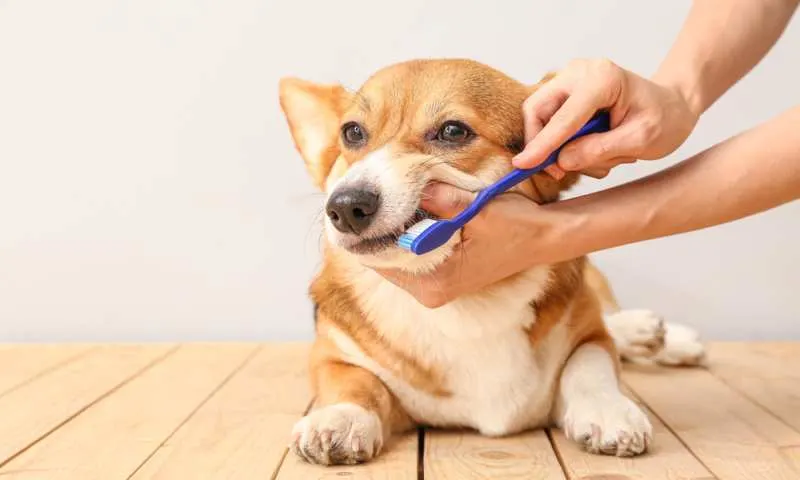
Corgis’ Teeth
You must offer a balanced diet to your corgis, as they need to eat nutritious food if they plan on staying on their feet all day long. Without an optimal food regime, your corgis might not be able to remain healthy for too long.
Although giving your corgis healthy food will ensure that they will remain physically fit, you will need to keep their teeth clean as well. In the past, I’ve done quick research on whether corgi owners brush their corgis’ teeth, and it turns out that most of them don’t!
It came to me as a shock, as not regularly cleaning corgis’ teeth might lead them to develop several infections. Just like we need to go to the dentists at least once a year, you need to check your corgis’ teeth once or twice per year.
Whenever you realize that your corgi has bad breath, it’s a clear indicator that you’ll need to clean its teeth. Take your corgi to the bathroom and place it into a bathtub. If you don’t own one, just place your corgi on the bathroom floor.
As soon as your corgi has calmed down, you will need to open its mouth. On that note, you need to know that most dogs, and particularly corgis, don’t allow just about anyone to open their mouth leisurely. Corgis will only allow you to open their mouth if they trust you.
Learn More: When Do Corgis Lose Their Baby Teeth?
Start First With Corgis’ Upper Teeth
Use your hand to grab their nose and use your fingers to pull up their upper lip to the point where you can see their upper teeth. After you’ve done that, grab a special dog brush meant for rubbing your corgis’ teeth.
On that note, if you don’t currently own one, you will need to visit your local pet shop before you try to clean your corgis’ teeth. Ask the personnel there to offer you a suitable dog brush for your corgis’ teeth. It needs to be smaller than usual, as corgis have smaller teeth than most dogs!
Start to scrub their upper teeth with that brush until you ensure that nothing bad remains between their teeth. Corgis might not enjoy this process, but you need to make sure that you stick to the plan, as brushing their teeth is essential for their overall health.
Follow the same instructions when you’re finished with the upper teeth. Just grab the corgis’ jaw and pull down their lower lip. Gently rub their lower teeth for several minutes. While you’re at it, try to inspect inside their mouth if something is out of the ordinary.
In most cases, if you offer only the best food for your corgi, nothing terrible will happen inside its mouth. On the off chance that you see something odd, you will need to take your corgi to your local veterinarian as soon as possible so that he can determine what the problem is.
After you’ve done with their teeth, just use a small towel, soak it in water and wipe their teeth for several seconds. Keep corgis’ teeth white and shiny; they will need them for the rest of their lives!
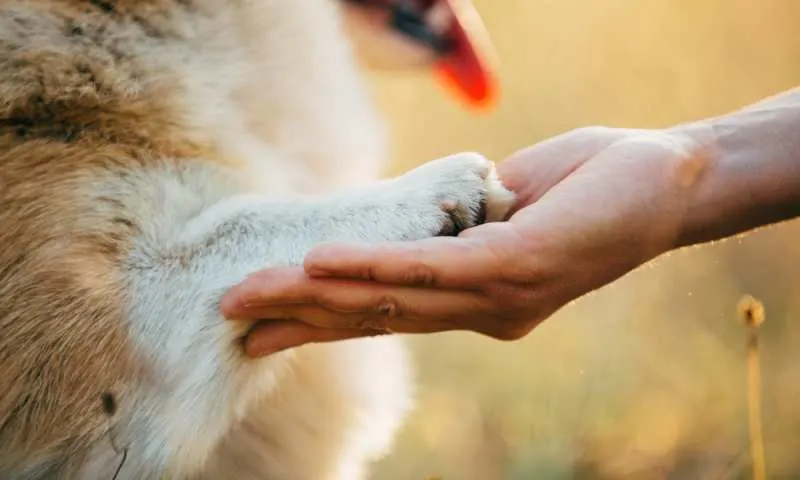
Corgis’ Paws
Whenever you take your corgis outside for a walk, you will need to put a leash around them. When leashed, all dogs, especially corgis, tend to rush from one end to the other, and in doing so, most of the time, they don’t particularly take care of what they might step on.
You can never know when someone will spit some gum on the asphalt. If your corgi happens to step on that gum while running somewhere outside, the chances are that that gum will remain on its paws. Other stuff like pieces of glass or small rocks might harm your corgis’ paw pads.
To ensure that nothing terrible happens to them when you take them outside, you will need to regularly take care of their paws. First, once or twice per month, you need to apply a special lotion on the corgis’ paw pads.
The one that worked best for me and my corgis was Cut Heal Pad Heal. It might be costly if you buy that one, but I guarantee that it will keep corgis’ paws safe from any cuts or bruises whenever they start to play around outside.
On top of that, this kind of lotion heals your corgis’ paw pads if they’ve already injured them in some way or form. I was never disappointed with this one, and I highly recommend that you order one as soon as possible.
Most of those lotions are in liquid form and can be applied directly on the wounded area or any region of the corgis’ paws. Instruct your corgis to lay down and to stay still until you’re finished with the treatment. Grab their legs, one by one, and apply the lotion.
Keep the number of lotion drops on your corgis’ paws as low as possible, as only one or two will do the trick. The lotion will keep corgis’ paws wet for a long time and will keep their paws protected from any cuts or bruises that they might get outside.
Learn More: Do Corgis Have Big Paws? A Comparative Rundown
Corgis Have Hair Everywhere!
Second, corgis’ hair grows everywhere, between their paw pads included. Therefore, every hair that exceeds the overall length of corgis’ paws needs to be cut as soon as possible. Follow the same procedure that I gave you earlier when I discussed corgis’ ears.
Just take some scissors and start to cut every hair that is longer than it should be. In most cases, whenever you leave corgis’ hair on their paw pads unattended, the length of the hair will become longer than it should. In those cases, the gum that I’ve mentioned before might get stuck on their hair.
Not only that, dirt, dust, and mud are also frequently stuck between their paw pads, and all of those things will irritate your corgis. So whenever you finish walking with your corgi, take it home and wash its paws thoroughly.
Make sure that you dry their paws and legs as soon as you’ve finished with the cleaning. Use a dry towel and brush their legs and paws. You will need to clean corgis’ paws whenever you finish with a walk to the park, and you will need to cut their hair between their paws at least twice a year!
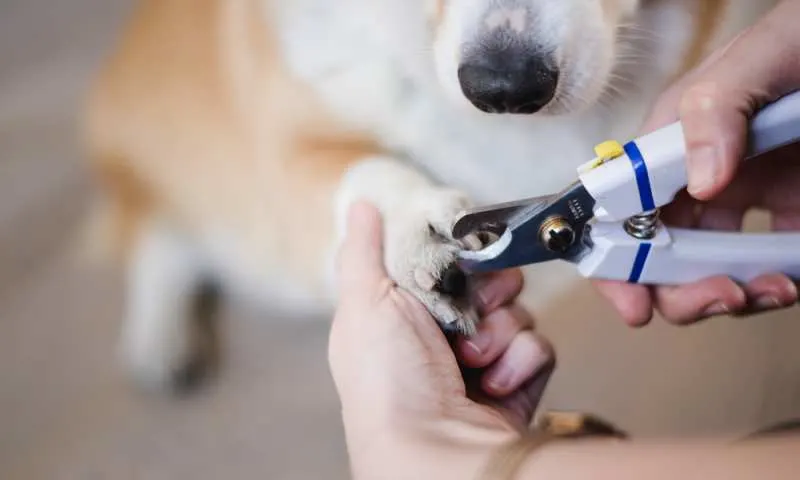
Corgis’ Nails
Nails are a part of corgis’ paws, and they will continuously grow from the beginning to the end of their lives. They have an essential role in allowing corgis to dig a hole somewhere whenever they feel like stashing their food so that they can eat it later.
On top of that, corgis use their nails for scratching themselves whenever they need to do so. If you let your corgis scratch themselves with nails that are longer than they should be, they might injure themselves in the process.
Not only that, but whenever your corgis start to run, they might harm themselves with their long nails if you didn’t previously cut them. So what’s the best way to trim corgis’ nails? I’ll offer you two solutions, and it will be up to you to find out what will work best for your corgis!
The first one is to use a trimmer:
- Order your corgi to lay down and to stay still. Try to offer some sweets to it if it doesn’t want to listen to you. As soon as it calms down, you can begin to trim their nails, one by one.
- Firstly, grab one of the corgis’ legs and hold it firmly. Ensure that, in the process of holding their leg, you don’t harm them by holding the leg too tight. Keep the grip loose, but not too loose.
- Apply a small amount of pressure to the paw pad that’s directly attached to the nail so that the nail becomes fully exposed.
- Most trimmers nowadays don’t need to be plugged in – they can work without the plug. If you don’t own one, try searching the internet as it offers many different ones. One that works for me is Casfuy Dog Nail Grinder, and I highly recommend that you buy the same!
- Start the trimmer and use it; apply the part that rotates to the tip of the corgis’ nail, and it will slowly begin to trim the nail. As long as you’re concentrated enough, nothing terrible will happen to them.
- Keep your eyes wide open and try not to trim more than what’s necessary. The best way to tell how much you can trim down corgis’ nails is to measure half of an inch from the root of the nail.
- As soon as you’ve arrived at the marked point, you should immediately stop the trimmer. Everything above that point can be dangerous to the corgis’ nails as there’s various stuff inside the nail that’s sensitive, like the quick that’s formed from blood vessels.
The other way to groom your corgis’ nails is to use small and sturdy scissors. If your corgis don’t particularly fancy the trimmer, you can use your regular scissors. You will need to follow the same procedure that I’ve listed above.
Groom your corgis’ nails at least once every three months. Corgis grow their nails rather quickly, and if you don’t pay close attention to them, it can start to irritate them and might even be the reason that they’ve hurt themselves. Keep their nails clean and short!
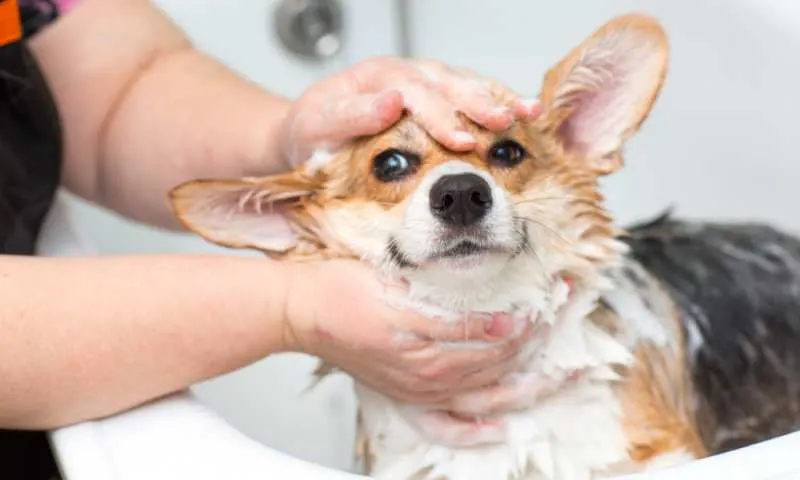
Corgis’ Coat
If you try to separate dogs by referring to what their coat looks like, you can tell them apart by putting them in a group with either short or long hair that’s all over their bodies. Even that isn’t enough, as there are dogs, like corgis, that possess what’s known as a double coat.
Every dog with a double coat has two layers of hair; a short one and one that is longer than the previous one. All corgis fit in this category, regardless of whether they’re the Pembroke Welsh Corgi or the Cardigan Welsh Corgi.
Corgis’ double coat is a fascinating thing;
- The shorter hair is used to maintain the optimal body temperature of your corgis. When it’s cold outside, they’ll use their shorter hair to gather and preserve the warm temperature of their bodies.
- The same goes when it’s hot outside; corgis will repel the heat with shorter hair and maintain lower body temperature.
- The “top coat” or the long hair is used to repel all sorts of moisture and dirt. You can define it as an umbrella for corgis!
Although having a double coat is undeniably better for dogs, maintaining it might be troublesome sometimes. Do corgis need to go to the groomer whenever they have dirty hair? If you know how to groom a corgi, not necessarily! Let me teach you how it’s done!
Before you learn how to brush a corgi, you will need all of the equipment necessary for that job. Head to your local pet shop and try to find a de-shedding blade for your corgis. If you can’t find one, you can purchase one from the internet.
Firstly, make sure that your corgis’ coat is dry. If you try to use the de-shedding blade on your corgis’ coat while it’s wet, it can hurt them, as the blade will start to tear their hair that’s still intact. Be gentle and dry them out!
Put the blade on the top of the corgis’ neck and slowly start to descend the blade as you continuously apply pressure to their coat. You need to be quite gentle when handling the de-shedding blade, as it’s rather sharp when you use it for the first time.
After you’ve brought the blade to their back legs, you can separate the blade from the corgis’ coat and, in doing so, take the excess hair on it and put it in a bag. Repeat this process several times or until you become convinced that there isn’t any excess hair left on their coat.
Brush Corgis Gently!
After you finish using the de-shedding blade, you can start to brush your corgis’ coat. Generally, you can even use one of your old brushes, but if you want to be fancy, go to the pet shop and buy one exclusively for your corgi!
Take the brush and stick the pins on the brush inside your corgis’ coat. Brush all the regions where your corgis have longer hair, and try to collect any hair that’s left after you’ve finished using the de-shedding blade.
You can even use the brush when dealing with the hair on the corgis’ tail, but an easier way to finish the job is to use thinning scissors. If you decide to use these scissors, you need to pay close attention not to hurt your corgi and injure its tail in the process.
It’s a wise idea to do all of this in your bathroom, as it can get rather messy if you groom corgis’ coats in a living room. Collecting the hair is somewhat bothersome, but if all of the hair has fallen on the bathroom tiles, you can easily just use the broom to collect it all.
You can even brush corgis’ coats outside if you live in a house with a large backyard. Keep in mind that you shouldn’t leave the excess hair outside as some corgis have a terrible tendency to eat their fallen hair! Don’t groom them outside if it’s currently windy or if it’s raining.
Corgis’ coat needs to be groomed regularly. If you allow them to have long hair all the time, it can get rather messy the next time you try to groom their coat. On top of that, if you leave their hair unattended for several weeks, corgis might manifest various infections on their skin.
By regularly grooming corgis’ coats, you’re making sure that their skin is breathing and that they can easily clean themselves up whenever necessary. When you’re done with brushing their hair, you will need to bathe them properly.
Read Also: Do Corgis Have Whiskers?
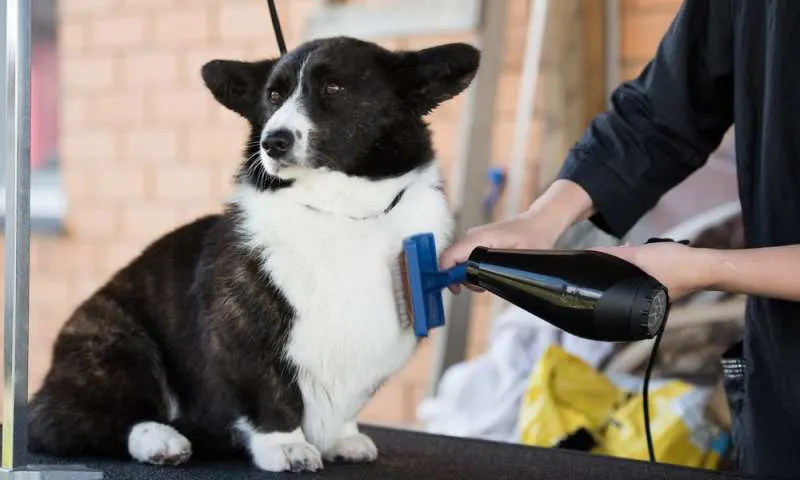
How To Properly Bathe A Corgi?
The most crucial step of the grooming process is to bathe your corgi. As soon as you’ve finished with either of the things above on this list, you will need to wash the entire body of your corgi.
Most corgis don’t particularly fancy going into the bathtub, but it’s necessary to soak them every time you’ve groomed some part of their bodies. Before you take them to the bathroom, you might need to bring some sweets that you’ll use to manipulate your corgi to get into the tub.
If your corgi starts to bark or howl when you get it close to the bathtub, just offer it some sweets, and it will calm down. The easiest way to wash your corgis is by putting them in a bathtub and releasing the water from the bathtub faucet on them.
Be as gentle as possible and make sure that you don’t hurt them in the process. Keep corgis’ eyes closed at all times and only release the water when it’s around room temperature. If you release water that’s too warm or too hot, your corgi might be frightened and will never want to get in the bathtub again.
In most cases, you can only use the water, and when the water falls on them, you can use your bare hands to rub every part of their bodies. You’ll need to remove any excess hair that’s left on them when you finish brushing the corgis’ coat.
You won’t need to wash your corgis’ entire bodies if you’ve only washed their legs after a long run in the park. On the other hand, after grooming corgis’ ears, eyes, nails, or coat, you’ll need to put them in a bathtub and thoroughly wash them immediately.
Shampoo On Corgis?
You can even use some shampoo if you want to, but it’s not necessary. The shampoo for dogs will be relatively easy to find and purchase in your local pet shop. Before you buy one, ask the personnel to offer you the best one for corgis, as every dog breed has its kind.
If you decide to use shampoo when you wash your corgi, you will need to ensure that you wash the shampoo you’ve put on your corgis’ coat. On top of that, don’t let the shampoo get in their eyes, as most shampoos have chemicals in them that will irritate corgis’ eyes.
As soon as you’ve finished washing your corgis’ entire body, you can turn off the faucet and grab a dry towel next to you. Use the towel to dry up your corgis’ coat completely, as it’s pretty dangerous to leave them wet outside.
Corgis are prone to getting a cold, and if you allow them to play outside while they’re wet, you’ll put them in a risky situation. Always ensure that you’ve entirely dried them up. After you’ve done all of this, you can release your corgis to play outside.
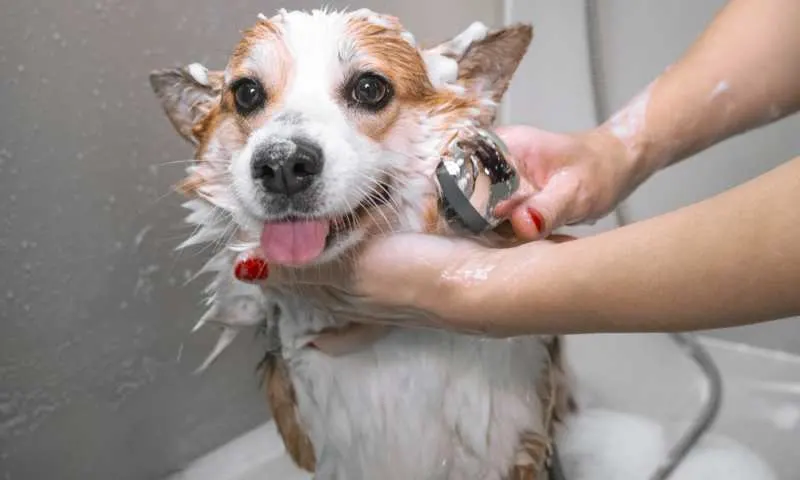
Corgi Grooming Ultimate Guide – Epilogue
Although corgis are resilient to most known diseases, they aren’t immune to getting dirty. Keeping their overall personal hygiene as clean as possible is the only way that you can be 100% sure that your corgis will remain healthy throughout their entire lives.
In most cases, people don’t know how to take care of their corgis on their own, and because of that, they call their local dog groomer. I understand that some of you don’t have enough time to spend with your corgis, but you will bond with them even further by grooming them.
Don’t allow yourself to miss the opportunity to bond with your corgis as much as possible. Learn with this Corgi grooming ultimate guide how to take care of their overall hygiene on your own!
Corgis need to be appropriately groomed, as neglecting that part of their lives might put them in harm’s way. Never allow yourself to put your corgis in a sticky situation, and make sure that you learn how to brush, trim, and wash your corgi by yourself!
It might be a tedious job, but corgis’ health should be the number one priority when dealing with them. Don’t let your corgis stink – take care of them every single day!

